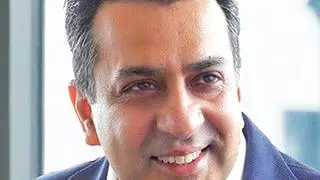Capgemini’s newly-appointed CEO Srinivas Kandula is no stranger to the company. Kandula, who joined Capgemini through the company’s $4-billion acquisition of IGATE, was the EVP, Member of the Executive Council and Chief People Officer at IGATE and has been credited with playing a key role in the acquisition of Patni by IGATE in 2011.
He is now repeating the same as he helps integrate IGATE with Capgemini. In a conversation with BusinessLine , Kandula talks about his plans for the India centre and how the integration of the two large IT service companies is panning out. Edited excerpts:
You take up this role at a time when both IT and BPO industries face rough weather. How challenging does that make your job?
I definitely consider the role as very challenging and demanding. There is no doubt about it. The IT services business has matured and moving into now the other phase of transformation-client expectations are growing rapidly because there is competition among vendors. Therefore, clients have a variety of vendors and services to choose from.
My new approach at Capgemini comprises four pillars — industrialisation and automation on one hand, transforming people on the other hand, adapting to new approaches to client management on another hand and optimisation is the fourth element.
What are your hiring plans in India?
We are already 90,000 people in India, support about 800+ clients globally, about 50 per cent of our staff works out of India. By December, we should be at 100,000 people level. This will be a combination of freshers and lateral hiring.
How will India centre shape up in the overall global business?
I want India to drive as the epicentre of execution for the group. Given our core strength in delivery and the fact that 50 per cent of the people work here, bringing it to the point of perfect execution is the key and that is what I'm driving. I am trying to bring a perfect synchronisation in the delivery processes, people processes, client management processes and the overall theme of optimisation. That means there are elements that I need to transform in people, in delivery, in client management and I am putting a blueprint of that at this point of time.
What are the challenges that you faced in the IGATE-Patni merger? How are you using those learning in the integration of IGATE and Capgemini?
Though IGATE was listed on the Nasdaq and Patni was listed on the Bombay Stock Exchange, both were basically India-driven companies. Large part of the workforce was in India and their methods were more or less the same. Culturally, Patni was more process-oriented and IGATE was more entrepreneurial oriented.
Capgemini as a company is very multi-cultural. And IGATE is very mono-cultural or very India centric — be it in decision making, interaction, process orientation etc. But advantage here is that Capgemini being multi-cultural, they have appreciation and tolerance for all kinds of cultures. Therefore, they could accommodate the IGATE culture instantly and where some reorientation was required, we reoriented. That will take another six months to integrate completely. These things cannot be done in a short span of time.
We are looking at promoting IGATE to embrace multi-culturalism more effectively and also promoting them to think global.
The re-branding of IGATE to Capgemini will be done in a few days from now. All our employees, including me, are already staff of Capgemini.
We are coming to an end of the first phase of consolidation in few days from now and after that we'll move into integration of processes and systems etc.
In the second phase, we are looking at integration enterprise systems, and certain processes — delivery processes and people processes and it will take about six months.








Comments
Comments have to be in English, and in full sentences. They cannot be abusive or personal. Please abide by our community guidelines for posting your comments.
We have migrated to a new commenting platform. If you are already a registered user of TheHindu Businessline and logged in, you may continue to engage with our articles. If you do not have an account please register and login to post comments. Users can access their older comments by logging into their accounts on Vuukle.